
Palestinian relatives mourn over the body of the journalist Akram Al-Shafi’i, who died on January 6, 2024, after being injured during an Israeli airstrike in the Gaza Strip.
by Nader Durgham • April 29, 2024
The war in Gaza has exacted a punishing toll: over 34,000 Palestinians are reported to have been killed, huge swathes of the strip have been damaged by shelling, and the population faces a humanitarian crisis.“Our office and equipment are gone, so we film using mobile phones. The issue we face is that sometimes there is no electricity or internet, so it can take us two days to get the image out.” — Wattan Editor-in-Chief Muamar Orabi
The sheer level of destruction, along with internet and electricity outages, have made it incredibly difficult to report from the area.
The conflict has had a particularly devastating effect on reporters. The Committee to Protect Journalists (CPJ) records 97 media staff as having been killed in the war as of April 28, 2024 — 92 Palestinians, three Lebanese, and two Israelis — which together with the toll of those injured and missing make it “the deadliest period for journalists since CPJ began gathering data in 1992.”
Another toll, from the media office of the authorities in Gaza, puts the figure higher, at 140 journalists killed in the enclave since Israel started its aerial and ground assault following the deadly assault by Hamas in Israel last October.
Local reporters and regional news outlets working closely with those on the ground have been the ones telling the in-depth story of what is happening there. International reporters have been largely unable to access Gaza.
We spoke to three organizations to find out how they are covering the conflict, to hear what they are working on, how their staff are coping, and to find out if they are able to conduct investigative work in the fog of war.
The picture they paint is bleak: journalists in Gaza, they told us, fear for their lives. Many reporters have lost numerous family members in Israeli strikes, and one reporter, for the Palestinian news outlet Wattan, went missing for weeks, though has now been found. Some staff members have been forced to stop work, others are dealing with the psychological impact of telling the stories of war, or seeing footage of the carnage that comes with airstrikes in a densely populated territory.
Supporting Colleagues from Overseas

Rawan Damen, the director general of Arab Reporters for Investigative Journalism (ARIJ) speaking in Italy in April 2024. Image: Diego Figone for the IJF
“We have two journalists who lost all their children,” said Rawan Damen, the director general of Arab Reporters for Investigative Journalism (ARIJ), a GIJN member organization dedicated to promoting investigative journalism across the Arab world. “Some people lost their homes, all of their belongings.”
When Israel’s land and air incursion started, staff at the Jordan-headquartered organization reached out to their colleagues in Gaza to ask what support they needed. While the organization had never worked in emergency procurement before, the immediate calls for help were focused on day-to-day practical survival, so ARIJ started providing equipment, tents, mattresses, then reporting equipment.
“We started getting a lot of requests,” said Damen, whose organization works with roughly 22 investigative journalists and fact-checkers in the Gaza Strip, many of whom have worked with them for years. “They started asking for help with tents. We helped some female journalists with their tents because they had nowhere to sleep, and it was difficult for them to sleep around men or sleep outside. We also helped them get basic needs such as mattresses, covers, and stuff like that.”
While some reporters told ARIJ they could not continue their journalistic work, others asked for help to keep going and to replace lost or damaged equipment. Although international organizations have struggled to get aid into the territory, ARIJ found having contacts on the ground has helped.
“We started working on replacing their equipment. We started buying, from inside Gaza, equipment such as mobile phones, laptops, cameras, microphones, solar [charging] systems, things that they need in general to do their jobs.”
So far they have helped around 96 journalists in Gaza, but the need is great. A crowdfunding campaign has reached only half of its target of US$100,000.
“We are spending money before the funds even arrive because there are many demands,” Damen said. “Things are very expensive now too, a laptop that used to cost $500 may now cost $2,000.”
While ARIJ also works on investigative projects, usually this happens after the end of a conflict. “But, exceptionally in Gaza, we are working on two topics. One of them is [with] a consortium, and another is an investigation we are working on on our own. This is long term though and will take time,” Damen explained. “We are not making our journalists on the ground work on it, because they cannot. So, we are working on the things we can work on from afar, while involving them in a minor way.”
Reporting from Gaza

Muamar Orabi, editor-in-chief of the Palestinian news agency Wattan, speaks to an audience at the International Journalism Festival in April 2024. Image: Diego Figone for the IJF
Soon after the conflict erupted, Wattan, a Palestinian news agency, told its reporters in Gaza to focus on documenting evidence of possible war crimes and recording people’s testimonies.
But they are working in the hardest of conditions. “We used to have an office in Gaza […] but it got destroyed,” said Muamar Orabi, the editor-in-chief, who has seven team members reporting from the strip. “Two of them lost the entirety of their families, as they were covering the war when their homes got hit. These journalists are now traumatized.” One of their reporters went missing, and for a time they did not know if he was “alive or dead.”
“Our office and equipment are gone, so we film using mobile phones. The issue we face is that sometimes there is no electricity or internet, so it can take us two days to get the image out [of Gaza]. We therefore must work in a very primitive way, but we are documenting,” he said.

Image: Map made using Flourish, by GIJN.
Some of that content is being used for a reporting project called “Voices from Gaza.” In the six months since the war started, they have recorded around 1,400 stories, Orabi said. “Our goal here is to document… It is not a political program, or news coverage, it is humanitarian.”
He says that reporters are facing challenges in the West Bank too, where staff have found their movement is heavily restricted. And he says there is also a fear among reporters that journalists are not safe in this conflict, even when wearing safety gear clearly marking them as members of the press. “When they are shooting, Israelis do not differentiate if you are a journalist wearing the gear,” he said. (Israel strongly denies targeting journalists, claiming it only targets Hamas. Local and international organizations dispute this, however, saying their evidence suggests press workers have been deliberately targeted.)
For now, the daily demands of covering the conflict are such that they are unable to conduct in-depth investigations.
“We are currently focusing on news gathering and documenting the crimes being committed,” said Orabi. “We do not have time to conduct investigations, and will leave that for after the war. However, we are gathering as much evidence and data as possible, as we will need them later on.”
Across the Border

One of the investigations by The Public Source, working with the NAWA Media Open-Source Investigations Team. Image: Screenshot, The Public Source
The Public Source is a GIJN member and independent media organization based in Lebanon. It has dedicated much of its coverage over the past few months to the war in Gaza and the spillover effects of the conflict in its home country.“As a publication that was born during crises, we’ve learned to adapt and adjust our editorial priorities somewhat quickly while continuing to work on the big stories that matter to our readers.” — The Public Source Editor-in-chief Lara Bitar
The team has been conducting open source investigations into specific Israeli attacks on the Palestinian enclave and reporting in-depth stories of what is happening in Lebanon, where the Iran-backed group Hezbollah and the Israeli army have been clashing for months.
Working in collaboration with the NAWA Media Open-Source Investigations Team, they have also been working to counter some of the narratives provided by the Israeli state to justify the conflict, said TPS Editor-in-Chief Lara Bitar. One of their investigations found that Israel was likely responsible for a deadly attack on a convoy of displaced people in Gaza’s Salah al-Din Street on October 13, 2023, a claim the Israeli military denies. Another report followed Israeli attacks on a number of UNRWA-run schools, which are being used by displaced Palestinians for shelter, in Gaza in November.
“When it comes to southern Lebanon, while it’s been too risky for us to send our journalists to report from the border, we’re communicating with residents impacted by the Israeli shelling so they can tell their own stories,” Bitar told GIJN. One of their most recent stories examined Israel’s alleged use of the incendiary and highly toxic white phosphorus munitions.
Everyone in the region is being impacted by the conflict, she said, amid fears that it could spread beyond Gaza and Israel.
“A wider escalation primarily impacts us as individuals living in Lebanon before considering its impact on our work and investigations,” Bitar said. “Like everyone else in the country — other than the southerners who are being subjected to daily bombardment — we’ve been holding our breath for the past six months and feeling a bit like sitting ducks.”
She added: “As for our editorial planning, as a publication that was born during crises, we’ve learned to adapt and adjust our editorial priorities somewhat quickly while of course continuing to work on the big stories that matter to our readers.”
Trauma of War
While the physical security of journalists and reporters is an acute issue in this conflict, so too is the psychological impact of reporting and investigating the war.“I told her: ‘Please, stay at home, for your own life.’ She told me, ‘No way.’ I asked her again to stay at home and hung up. She decided to go out and cover it,” Orabi said. An hour later her home was bombed. “Had she stayed, she would have been killed. The field is sometimes safer than home.”
“We have colleagues in deep trauma, deep depression,” explained Wattan’s Orabi. “One of our colleagues [in Gaza] lost all 17 members of her family and another lost all four. No one knows what the next day is like. There is confusion, lack of clarity. Life and death are the same now.”
Damen, from ARIJ, said those outside the Gaza Strip who are dealing with the material that is streaming out of the conflict are also suffering.
“Our team is traumatized. The issue is, we speak to the journalists, we have colleagues who speak to journalists in Gaza every single day, which of course exposes you to things you are not used to,” she said. “We also have those who work in fact-checking and videos, who are forced to watch videos of massacres several times.”
“One of our colleagues started dreaming that her children died, and she lives in Amman, not in Palestine,” said Damen. “That is why we decided that we need to work on mental health support. Every Thursday, a psychologist comes in and does a sort of group therapy with people both offline and online and makes herself available for one-to-one consultations.”
As an editor, there are questions of responsibility too, said Orabi, although often the answers are not easy. When one of his team asked him if she should go and cover an Israeli attack at the Al-Shifa Hospital, once the largest and most important referral hospital in Gaza, he advised her to stay away.
“I told her: ‘Please, stay at home, for your own life.’ She told me, ‘No way.’ I asked her again to stay at home and hung up. She decided to go out and cover it,” he said. An hour later her home was bombed. “Had she stayed, she would have been killed. The field is sometimes safer than home.”
Join GIJN for a webinar on investigating the Israel-Hamas conflict on Tuesday, April 30, 2024, with Sarah El-Deeb from the Associated Press, Peter Polack from Forensic Architecture, and Al Jazeera’s Phil Rees. You can register for the webinar here.

The war in Gaza has exacted a punishing toll: over 34,000 Palestinians are reported to have been killed, huge swathes of the strip have been damaged by shelling, and the population faces a humanitarian crisis.“Our office and equipment are gone, so we film using mobile phones. The issue we face is that sometimes there is no electricity or internet, so it can take us two days to get the image out.” — Wattan Editor-in-Chief Muamar Orabi
The sheer level of destruction, along with internet and electricity outages, have made it incredibly difficult to report from the area.
The conflict has had a particularly devastating effect on reporters. The Committee to Protect Journalists (CPJ) records 97 media staff as having been killed in the war as of April 28, 2024 — 92 Palestinians, three Lebanese, and two Israelis — which together with the toll of those injured and missing make it “the deadliest period for journalists since CPJ began gathering data in 1992.”
Another toll, from the media office of the authorities in Gaza, puts the figure higher, at 140 journalists killed in the enclave since Israel started its aerial and ground assault following the deadly assault by Hamas in Israel last October.
Local reporters and regional news outlets working closely with those on the ground have been the ones telling the in-depth story of what is happening there. International reporters have been largely unable to access Gaza.
We spoke to three organizations to find out how they are covering the conflict, to hear what they are working on, how their staff are coping, and to find out if they are able to conduct investigative work in the fog of war.
The picture they paint is bleak: journalists in Gaza, they told us, fear for their lives. Many reporters have lost numerous family members in Israeli strikes, and one reporter, for the Palestinian news outlet Wattan, went missing for weeks, though has now been found. Some staff members have been forced to stop work, others are dealing with the psychological impact of telling the stories of war, or seeing footage of the carnage that comes with airstrikes in a densely populated territory.
Supporting Colleagues from Overseas

Rawan Damen, the director general of Arab Reporters for Investigative Journalism (ARIJ) speaking in Italy in April 2024. Image: Diego Figone for the IJF
“We have two journalists who lost all their children,” said Rawan Damen, the director general of Arab Reporters for Investigative Journalism (ARIJ), a GIJN member organization dedicated to promoting investigative journalism across the Arab world. “Some people lost their homes, all of their belongings.”
When Israel’s land and air incursion started, staff at the Jordan-headquartered organization reached out to their colleagues in Gaza to ask what support they needed. While the organization had never worked in emergency procurement before, the immediate calls for help were focused on day-to-day practical survival, so ARIJ started providing equipment, tents, mattresses, then reporting equipment.
“We started getting a lot of requests,” said Damen, whose organization works with roughly 22 investigative journalists and fact-checkers in the Gaza Strip, many of whom have worked with them for years. “They started asking for help with tents. We helped some female journalists with their tents because they had nowhere to sleep, and it was difficult for them to sleep around men or sleep outside. We also helped them get basic needs such as mattresses, covers, and stuff like that.”
While some reporters told ARIJ they could not continue their journalistic work, others asked for help to keep going and to replace lost or damaged equipment. Although international organizations have struggled to get aid into the territory, ARIJ found having contacts on the ground has helped.
“We started working on replacing their equipment. We started buying, from inside Gaza, equipment such as mobile phones, laptops, cameras, microphones, solar [charging] systems, things that they need in general to do their jobs.”
So far they have helped around 96 journalists in Gaza, but the need is great. A crowdfunding campaign has reached only half of its target of US$100,000.
“We are spending money before the funds even arrive because there are many demands,” Damen said. “Things are very expensive now too, a laptop that used to cost $500 may now cost $2,000.”
While ARIJ also works on investigative projects, usually this happens after the end of a conflict. “But, exceptionally in Gaza, we are working on two topics. One of them is [with] a consortium, and another is an investigation we are working on on our own. This is long term though and will take time,” Damen explained. “We are not making our journalists on the ground work on it, because they cannot. So, we are working on the things we can work on from afar, while involving them in a minor way.”
Reporting from Gaza

Muamar Orabi, editor-in-chief of the Palestinian news agency Wattan, speaks to an audience at the International Journalism Festival in April 2024. Image: Diego Figone for the IJF
Soon after the conflict erupted, Wattan, a Palestinian news agency, told its reporters in Gaza to focus on documenting evidence of possible war crimes and recording people’s testimonies.
But they are working in the hardest of conditions. “We used to have an office in Gaza […] but it got destroyed,” said Muamar Orabi, the editor-in-chief, who has seven team members reporting from the strip. “Two of them lost the entirety of their families, as they were covering the war when their homes got hit. These journalists are now traumatized.” One of their reporters went missing, and for a time they did not know if he was “alive or dead.”
“Our office and equipment are gone, so we film using mobile phones. The issue we face is that sometimes there is no electricity or internet, so it can take us two days to get the image out [of Gaza]. We therefore must work in a very primitive way, but we are documenting,” he said.

Image: Map made using Flourish, by GIJN.
Some of that content is being used for a reporting project called “Voices from Gaza.” In the six months since the war started, they have recorded around 1,400 stories, Orabi said. “Our goal here is to document… It is not a political program, or news coverage, it is humanitarian.”
He says that reporters are facing challenges in the West Bank too, where staff have found their movement is heavily restricted. And he says there is also a fear among reporters that journalists are not safe in this conflict, even when wearing safety gear clearly marking them as members of the press. “When they are shooting, Israelis do not differentiate if you are a journalist wearing the gear,” he said. (Israel strongly denies targeting journalists, claiming it only targets Hamas. Local and international organizations dispute this, however, saying their evidence suggests press workers have been deliberately targeted.)
For now, the daily demands of covering the conflict are such that they are unable to conduct in-depth investigations.
“We are currently focusing on news gathering and documenting the crimes being committed,” said Orabi. “We do not have time to conduct investigations, and will leave that for after the war. However, we are gathering as much evidence and data as possible, as we will need them later on.”
Across the Border

One of the investigations by The Public Source, working with the NAWA Media Open-Source Investigations Team. Image: Screenshot, The Public Source
The Public Source is a GIJN member and independent media organization based in Lebanon. It has dedicated much of its coverage over the past few months to the war in Gaza and the spillover effects of the conflict in its home country.“As a publication that was born during crises, we’ve learned to adapt and adjust our editorial priorities somewhat quickly while continuing to work on the big stories that matter to our readers.” — The Public Source Editor-in-chief Lara Bitar
The team has been conducting open source investigations into specific Israeli attacks on the Palestinian enclave and reporting in-depth stories of what is happening in Lebanon, where the Iran-backed group Hezbollah and the Israeli army have been clashing for months.
Working in collaboration with the NAWA Media Open-Source Investigations Team, they have also been working to counter some of the narratives provided by the Israeli state to justify the conflict, said TPS Editor-in-Chief Lara Bitar. One of their investigations found that Israel was likely responsible for a deadly attack on a convoy of displaced people in Gaza’s Salah al-Din Street on October 13, 2023, a claim the Israeli military denies. Another report followed Israeli attacks on a number of UNRWA-run schools, which are being used by displaced Palestinians for shelter, in Gaza in November.
“When it comes to southern Lebanon, while it’s been too risky for us to send our journalists to report from the border, we’re communicating with residents impacted by the Israeli shelling so they can tell their own stories,” Bitar told GIJN. One of their most recent stories examined Israel’s alleged use of the incendiary and highly toxic white phosphorus munitions.
Everyone in the region is being impacted by the conflict, she said, amid fears that it could spread beyond Gaza and Israel.
“A wider escalation primarily impacts us as individuals living in Lebanon before considering its impact on our work and investigations,” Bitar said. “Like everyone else in the country — other than the southerners who are being subjected to daily bombardment — we’ve been holding our breath for the past six months and feeling a bit like sitting ducks.”
She added: “As for our editorial planning, as a publication that was born during crises, we’ve learned to adapt and adjust our editorial priorities somewhat quickly while of course continuing to work on the big stories that matter to our readers.”
Trauma of War
While the physical security of journalists and reporters is an acute issue in this conflict, so too is the psychological impact of reporting and investigating the war.“I told her: ‘Please, stay at home, for your own life.’ She told me, ‘No way.’ I asked her again to stay at home and hung up. She decided to go out and cover it,” Orabi said. An hour later her home was bombed. “Had she stayed, she would have been killed. The field is sometimes safer than home.”
“We have colleagues in deep trauma, deep depression,” explained Wattan’s Orabi. “One of our colleagues [in Gaza] lost all 17 members of her family and another lost all four. No one knows what the next day is like. There is confusion, lack of clarity. Life and death are the same now.”
Damen, from ARIJ, said those outside the Gaza Strip who are dealing with the material that is streaming out of the conflict are also suffering.
“Our team is traumatized. The issue is, we speak to the journalists, we have colleagues who speak to journalists in Gaza every single day, which of course exposes you to things you are not used to,” she said. “We also have those who work in fact-checking and videos, who are forced to watch videos of massacres several times.”
“One of our colleagues started dreaming that her children died, and she lives in Amman, not in Palestine,” said Damen. “That is why we decided that we need to work on mental health support. Every Thursday, a psychologist comes in and does a sort of group therapy with people both offline and online and makes herself available for one-to-one consultations.”
As an editor, there are questions of responsibility too, said Orabi, although often the answers are not easy. When one of his team asked him if she should go and cover an Israeli attack at the Al-Shifa Hospital, once the largest and most important referral hospital in Gaza, he advised her to stay away.
“I told her: ‘Please, stay at home, for your own life.’ She told me, ‘No way.’ I asked her again to stay at home and hung up. She decided to go out and cover it,” he said. An hour later her home was bombed. “Had she stayed, she would have been killed. The field is sometimes safer than home.”
Join GIJN for a webinar on investigating the Israel-Hamas conflict on Tuesday, April 30, 2024, with Sarah El-Deeb from the Associated Press, Peter Polack from Forensic Architecture, and Al Jazeera’s Phil Rees. You can register for the webinar here.

Nader Durgham is a journalist working with Middle East Eye and Sky News, covering the Gaza war and its spillover in Lebanon. He has worked with The Washington Post in Beirut, covering Lebanon and Syria, including reporting on the Beirut Port explosion, the economic crisis, and political and humanitarian issues across Syria. He is a graduate of the American University of Beirut and has a master’s degree in Democracy and Comparative Politics from University College London.
RELATED STORIES
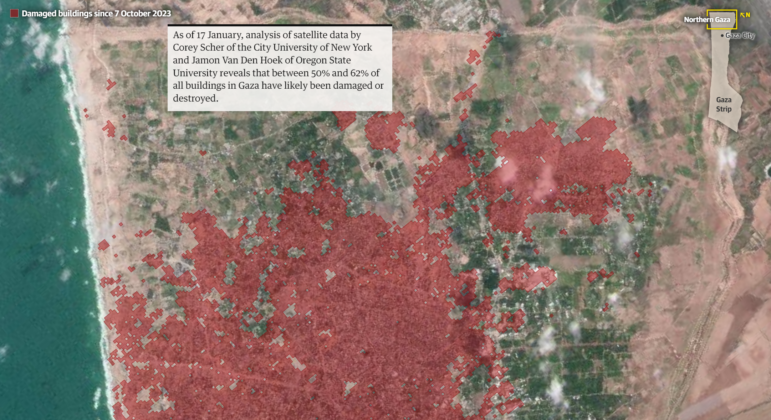
Mapping Conflict: Using Satellite Radar Data to Track the War Damage in Gaza
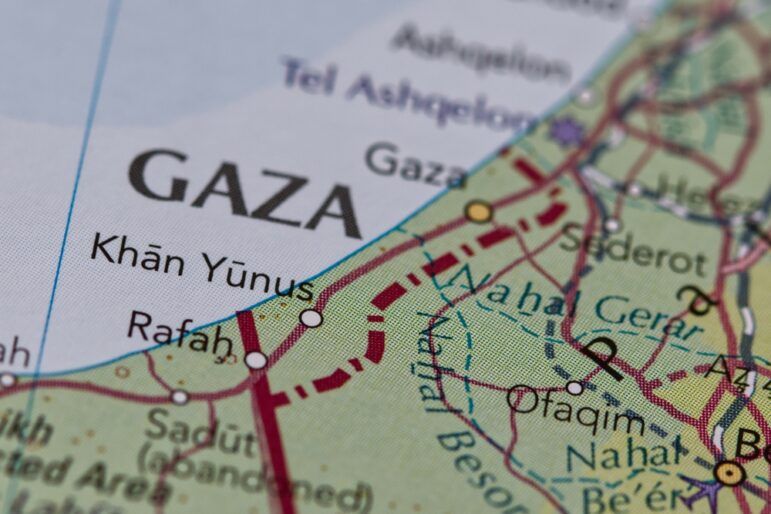
Round-Up of Notable Watchdog Reporting on the Israel-Hamas Conflict
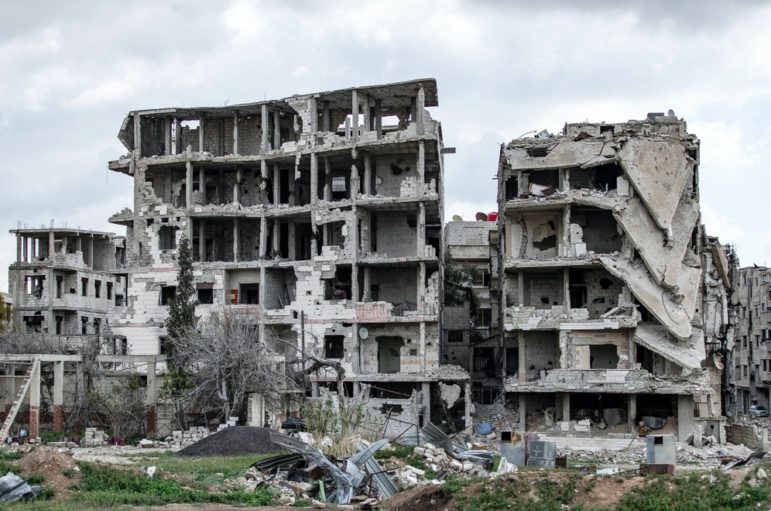
Lessons Learned from Syrian Journalists Investigating Russian War Crimes
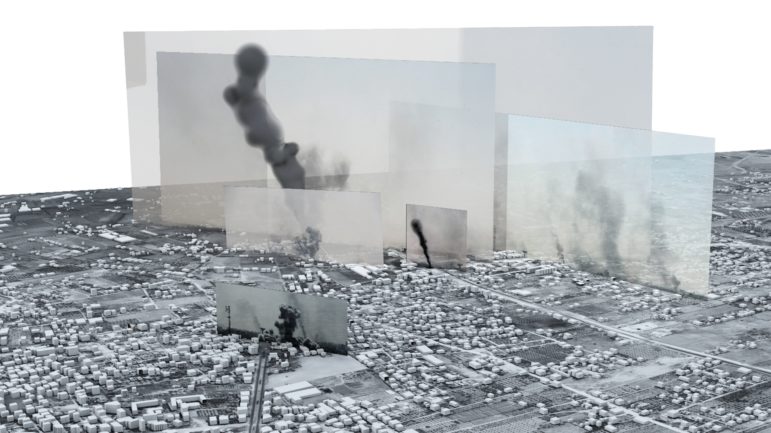
Using Forensic Methods to Investigate Human Rights Violations in the Middle EastMor
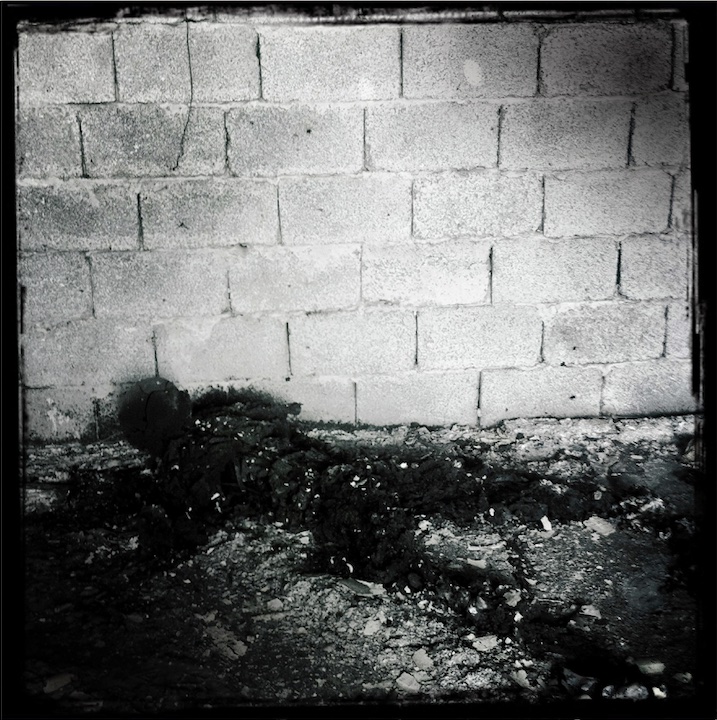
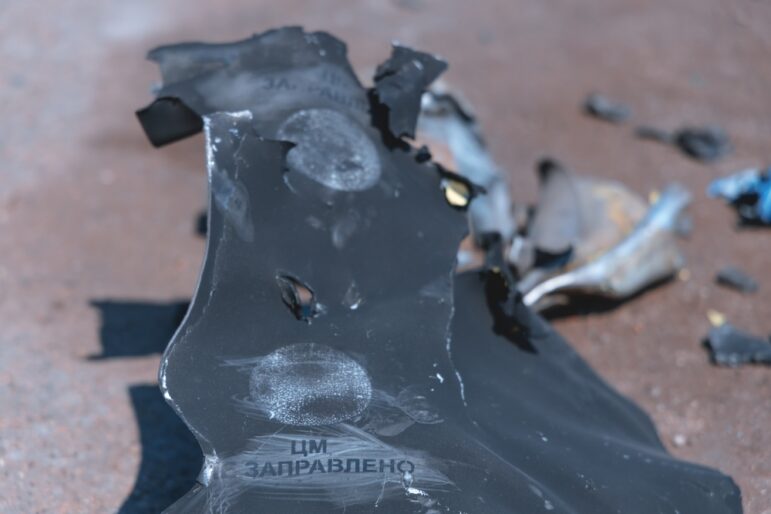
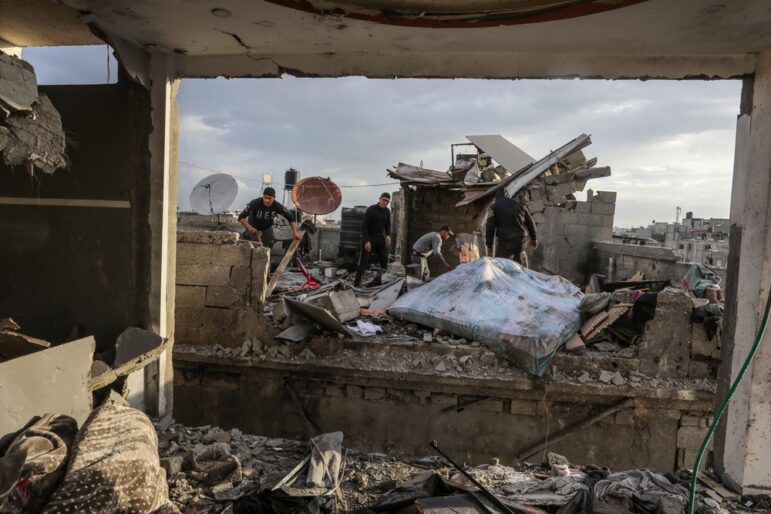

No comments:
Post a Comment